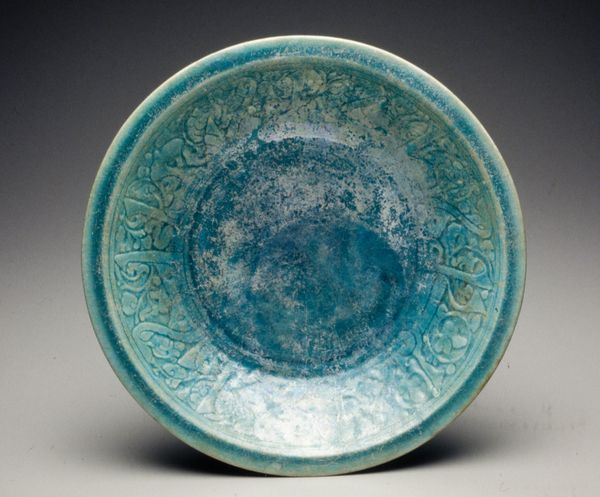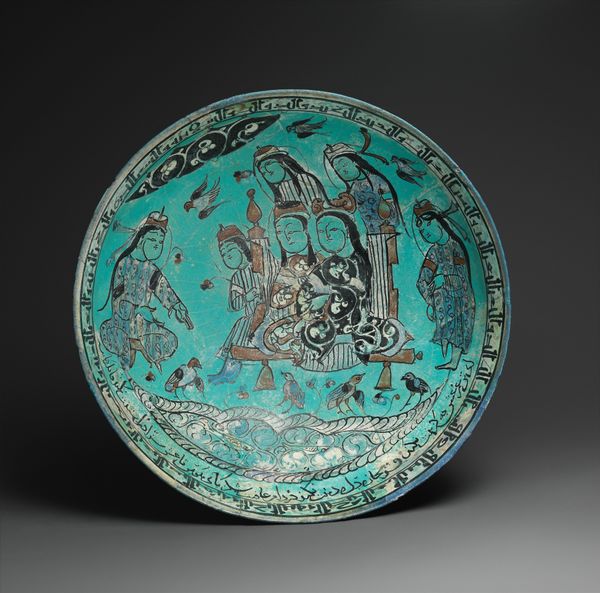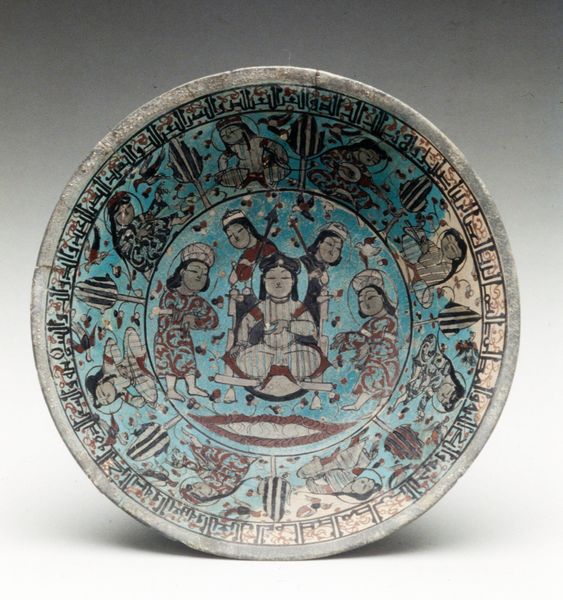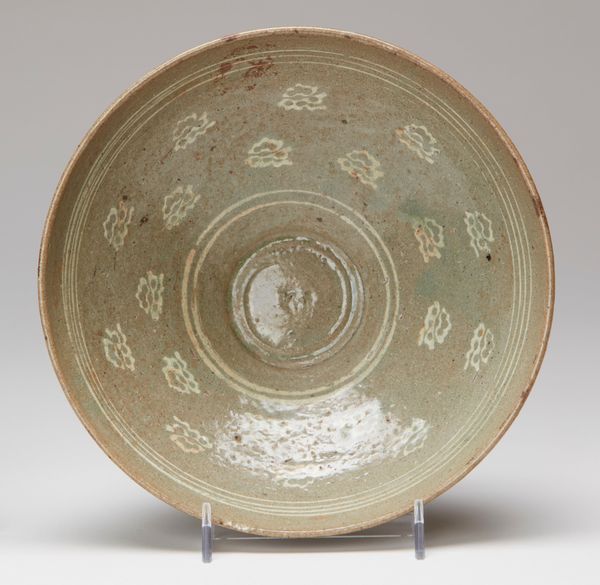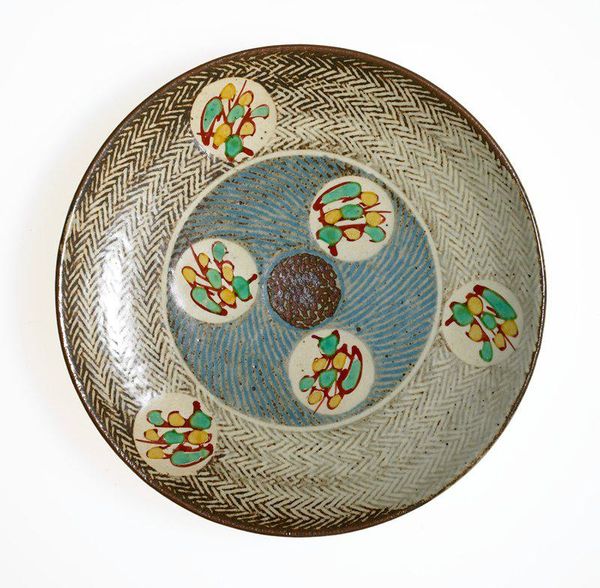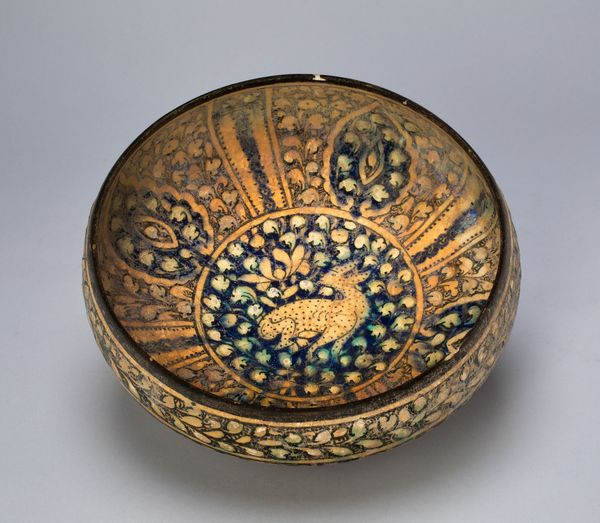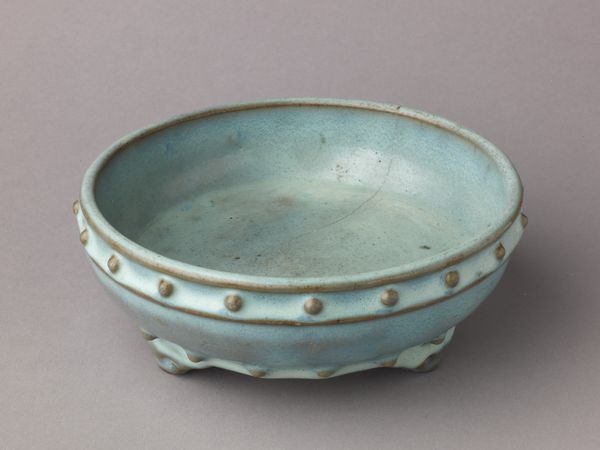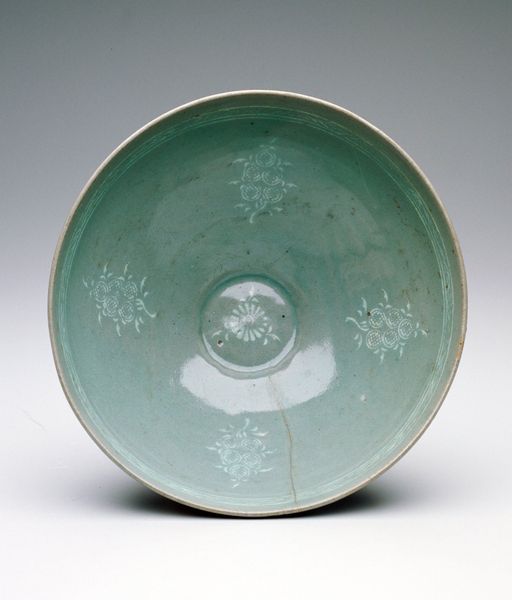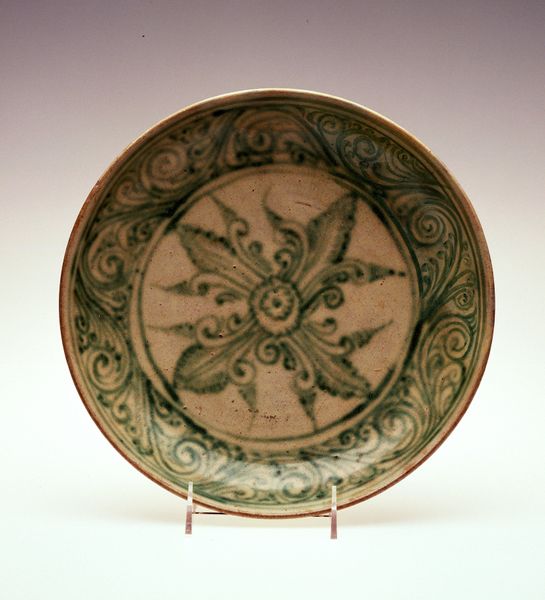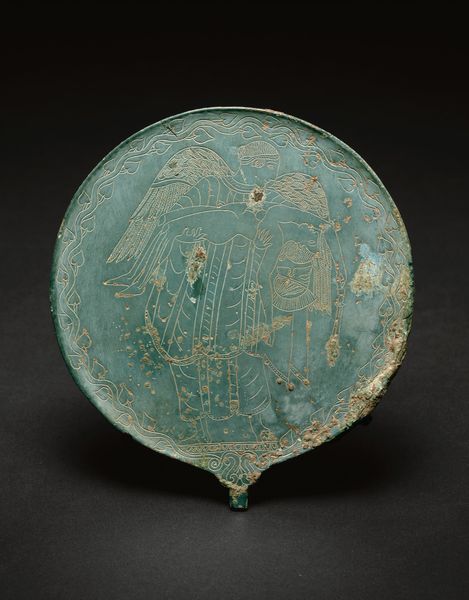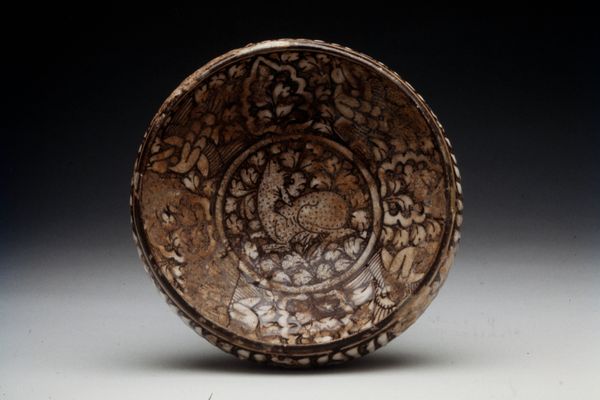
ceramic
#
ceramic
#
abstraction
#
islamic-art
#
decorative-art
Copyright: Public Domain
Curator: Standing before us is a ceramic plate originating from around the 17th century, now residing here at the Minneapolis Institute of Art. Editor: That instantly calls to mind ancient pools of water in tiled courtyards. There's something so inviting about that particular shade of turquoise, even aged and a little distressed as it is here. Curator: It's fascinating to consider how this humble piece reflects the artistic currents of its time. Its creation undoubtedly intersected with trade routes and shifting political powers, shaping the availability of materials and the dissemination of design sensibilities across regions. Editor: I agree; the circular pattern in the center pulls me into an older world, echoing a kind of mystic mandala. The stark black ink over the ceramic is so compelling. Does that pattern have specific significance? Curator: The abstract ornamentation hints at possible influences from Islamic art. You often find repeating geometric patterns, though in this piece it seems almost a freestyle exploration rather than a strict adherence. Islamic cultures have always favored abstraction as opposed to explicit depiction, for understandable reasons, so its a product of cultural practices as well as religious concerns. Editor: It’s not overtly religious. Instead, it creates an air of reverence for pattern and repetition. The floral shapes too suggest abundance and growth – possibly, they're about prosperity and nature's endless renewal, expressed abstractly through these decorative symbols. Curator: The plate itself as an everyday object invites questions about its intended purpose, who owned it, and where and how it might have circulated. It allows one to trace broader social customs. It tells a much richer story. Editor: Yes. I look at it now with a different appreciation: an embodiment of survival itself. Transmitting symbols and stories, resisting the erasure of time. Curator: It's been fascinating to think about how such a simple object can be so rich in associations and interpretations. Editor: Absolutely, every tiny fissure and the faded color all adds depth and makes its past whispers visible, really amazing.
Comments
No comments
Be the first to comment and join the conversation on the ultimate creative platform.
